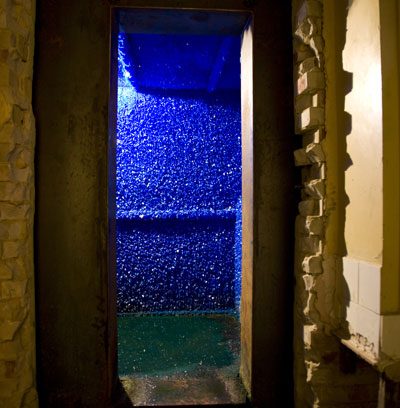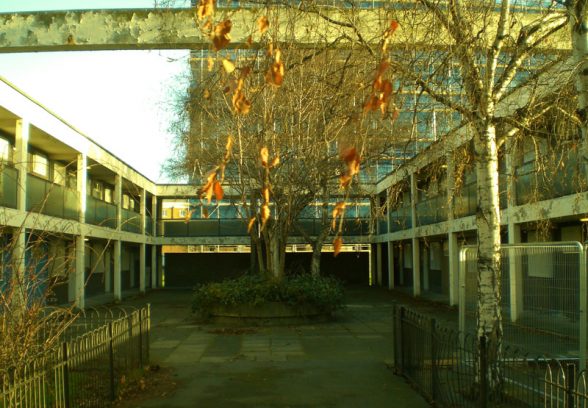This website uses cookies
This website uses cookies to enable it to function properly and to analyse how the website is used. Please click 'Close' to accept and continue using the website.






In 2008, when artist Roger Hiorn’s was making Siezure, by pumping tonnes of copper sulphate solution into one of the ex-LCC low-rise flats on Harper Road SE17, I walked from home via Walworth and the Old Kent Road to meet him and write about it for Building Design. We talked a lot about how he had selected the site, and how seeking the work out in this run-down part of Southwark would effect its impact on visitors. Now the amazing blue crystall grotto, created in the spaces of an abandoned domestic life once envisaged as a post war ideal, is being moved to the Yorkshire Sculpture Park and having a new home constructed for it by Adam Khan Architects. the new location could hardly be more different, without shippoing it abroard. If making the piece in the first place was a tehnical challenge, extracting it, transporting it and creating a new context that works has/will be even more challenging, both technically and artiustically but I’m glad it’s happening.
Co-incidentally Kahn is the subject of a recent Inpiration article in BD (the excellent series where Pamela Buxton takes contemporary architects back to see a building that has made a big impact on them). Kahn picked Fernand Pouillon’s La Tourette Housing in Marseille (1948-1953), a great example of innovative low-budget public housing , by a contraversial French architect who was later jailed for misdemenours whilst acting as a building contractor on a housing project in Paris (he subequenly escaped, built loads in Algeria, and was finally pardoned by George Pompidou). Intersatingly, like Seizure, the La Tourette housing also developed an innovative pouring techniche– the stone cladding panels act as permaent shuttering for the concrete beneath.
Acording to the Arts Council Hioron’s says “Given the choice between an imprecise myth of the past and an unknowable future, the latter was always going to be more interesting, more of a problem. As an object removed from its origin it’s forever in limbo – nomadic and unplaceable, and will continue to be. If you have the opportunity to complicate things, you should always take it.” The Guardian reported him as saying “I was more than happy to complicate its future: if you have the opportunity to complicate things, then you should always take it,” … “It was always about a sense of homelessness or nomadic energy, and of inconclusiveness.”
I’d like to hope that |the new installation will make some further refernce back to the histroy of post war social housing, and to the imporance of good “background” architecture, of which Harper Road was an under appreaciated example. that sort of extra complication could be amazing.
see
http://www.guardian.co.uk/artanddesign/2012/jul/06/roger-hiorns-seizure-demolition-yorkshire
http://www.artscouncilcollection.org.uk/loadNews.do?id=60
Adam Kahn in BD,6/7/2012 , not on line, but you can read the text here: http://archrecord.construction.com/yb/ar/article.aspx?story_id=174527276

Become a C20 member today and help save our modern design heritage.
Comments